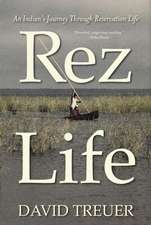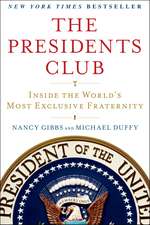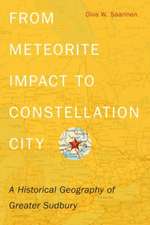Sectarianism and Orestes Brownson in the American Religious Marketplace: Histories of the Sacred and Secular, 1700–2000
Autor Ángel Cortésen Limba Engleză Hardback – 21 iul 2017
| Toate formatele și edițiile | Preț | Express |
|---|---|---|
| Paperback (1) | 690.11 lei 6-8 săpt. | |
| Springer International Publishing – 13 mai 2018 | 690.11 lei 6-8 săpt. | |
| Hardback (1) | 695.53 lei 6-8 săpt. | |
| Springer International Publishing – 21 iul 2017 | 695.53 lei 6-8 săpt. |
Din seria Histories of the Sacred and Secular, 1700–2000
- 18%
 Preț: 727.00 lei
Preț: 727.00 lei - 15%
 Preț: 585.73 lei
Preț: 585.73 lei -
 Preț: 278.64 lei
Preț: 278.64 lei -
 Preț: 384.31 lei
Preț: 384.31 lei - 15%
 Preț: 645.10 lei
Preț: 645.10 lei -
 Preț: 384.09 lei
Preț: 384.09 lei -
 Preț: 213.05 lei
Preț: 213.05 lei -
 Preț: 268.78 lei
Preț: 268.78 lei - 15%
 Preț: 637.89 lei
Preț: 637.89 lei - 18%
 Preț: 890.37 lei
Preț: 890.37 lei -
 Preț: 386.22 lei
Preț: 386.22 lei - 18%
 Preț: 781.45 lei
Preț: 781.45 lei - 18%
 Preț: 720.70 lei
Preț: 720.70 lei -
 Preț: 349.74 lei
Preț: 349.74 lei - 15%
 Preț: 635.01 lei
Preț: 635.01 lei - 18%
 Preț: 783.50 lei
Preț: 783.50 lei -
 Preț: 451.48 lei
Preț: 451.48 lei - 15%
 Preț: 588.50 lei
Preț: 588.50 lei -
 Preț: 392.37 lei
Preț: 392.37 lei -
 Preț: 390.63 lei
Preț: 390.63 lei -
 Preț: 391.61 lei
Preț: 391.61 lei
Preț: 695.53 lei
Preț vechi: 818.27 lei
-15% Nou
Puncte Express: 1043
Preț estimativ în valută:
133.11€ • 138.45$ • 109.89£
133.11€ • 138.45$ • 109.89£
Carte tipărită la comandă
Livrare economică 14-28 aprilie
Preluare comenzi: 021 569.72.76
Specificații
ISBN-13: 9783319518763
ISBN-10: 3319518763
Pagini: 178
Ilustrații: X, 178 p.
Dimensiuni: 148 x 210 x 18 mm
Greutate: 0.38 kg
Ediția:1st ed. 2017
Editura: Springer International Publishing
Colecția Palgrave Macmillan
Seria Histories of the Sacred and Secular, 1700–2000
Locul publicării:Cham, Switzerland
ISBN-10: 3319518763
Pagini: 178
Ilustrații: X, 178 p.
Dimensiuni: 148 x 210 x 18 mm
Greutate: 0.38 kg
Ediția:1st ed. 2017
Editura: Springer International Publishing
Colecția Palgrave Macmillan
Seria Histories of the Sacred and Secular, 1700–2000
Locul publicării:Cham, Switzerland
Cuprins
Prologue.- Chapter One: An Age of ‘Crisis and Discontinuity’: Brownson’s Early Religious Confusion & Mobility.- Chapter Two: ‘A Sea of Sectarian Rivalries’: The Second Great Awakening & Religious Conflict.- Chapter Three: ‘I Am Slave to No Sect’: Defense of Intellectual Freedom & Doubt.- Chapter Four: ‘I Wished to Unite Men’: A Vision of Religious Calm in the Midst of an Intellectual Storm.- Chapter Five: ‘We Must Have Clothing and a Shelter’: Search for a Religious Home.- Chapter Six: ‘We Are Ourselves Too Polemical’:Formation of a Rhetorical Pugilist.- Chapter Seven: ‘A Dangerous and Pestilent Fellow’: Return to Religious Liberalism.- Chapter Eight: ‘An Uncompromising Catholic and a Thoroughgoing Papist’: End of a Long Journey.- Epilogue.
Notă biografică
Ángel Cortés is an Associate Professor of History at Holy Cross College, USA. Cortés holds degrees in Psychology, Religious Studies, and History.
Textul de pe ultima copertă
This book reveals the origins of the American religious marketplace by examining the life and work of reformer and journalist Orestes Brownson (1803-1876). Grounded in a wide variety of sources, including personal correspondence, journalistic essays, book reviews, and speeches, this work argues that religious sectarianism profoundly shaped participants in the religious marketplace. Brownson is emblematic of this dynamic because he changed his religious identity seven times over a quarter of a century. Throughout, Brownson waged a war of words opposing religious sectarianism. By the 1840s, however, a corrosive intellectual environment transformed Brownson into an arch religious sectarian. The book ends with a consideration of several explanations for Brownson’s religious mobility, emphasizing the goad of sectarianism as the most salient catalyst for change.
Caracteristici
Explores the meaning of sectarianism in nineteenth-century America through Orestes Brownson’s life and writings Shows how religious mobility shaped belief in antebellum America and how people responded to religious choice and division Offers a psychological portrait of Brownson and his approach to religious mobility











